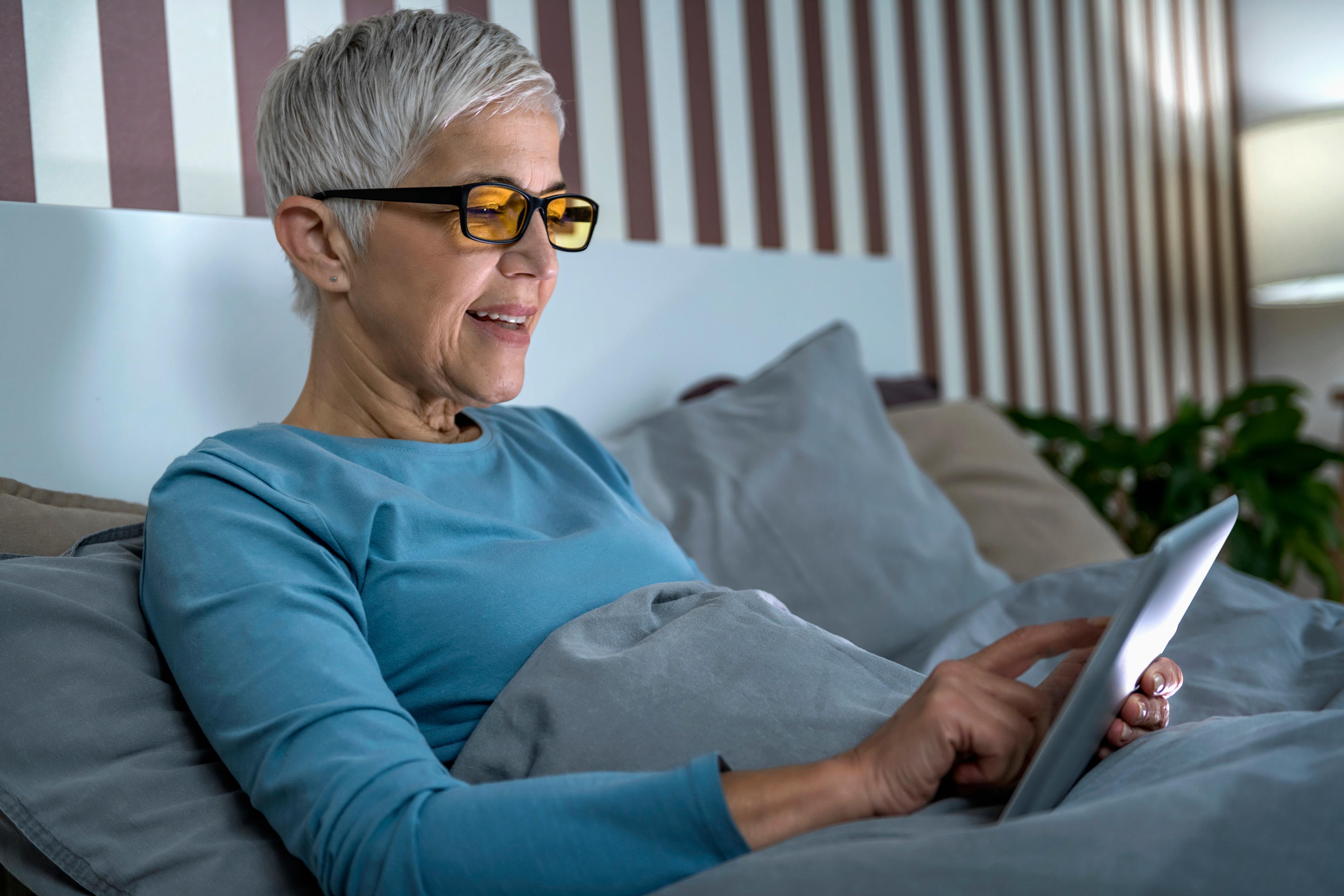Are Blue Light Glasses Effective?

Grace Trelease
| 3 min read

Blue light glasses have become increasingly popular in the past few years. There has been a growing concern about whether the blue light from screens is unhealthy for the human eye.
How do blue light glasses work and are they actually effective? Learn more about blue light glasses.
What is blue light?
Blue light is a part of the visible light spectrum with a shorter wavelength than most other visible light. Blue light is present in the light emitted from the sun, but it is also present in the light emitted from computer screens, phones, televisions and tablets. Blue light even has the potential to affect your circadian rhythm, the body’s internal clock and could affect your sleep schedule.
What are blue light glasses and do they work?
Blue light glasses have specific lenses that filter out the blue light that comes from screens on digital devices. These products are often presented as eyewear that helps prevent eye strain and reduce disrupted sleep patterns.
Despite their growing popularity, there is little to no evidence that shows blue light glasses are effective, according to the American Academy of Ophthalmology. Many people may report experiencing eye issues or headaches while using screens. This is not a direct result of blue light, but most likely results from prolonged screen use.
Blue light glasses are not harmful. While they don’t help with protecting your eyes from the light emitted from screens, they don’t hurt either, according to the Cleveland Clinic.
Computer vision syndrome (CVS), also known as digital eye strain, is what causes discomfort in the eye from staring at a screen for a long period of time. Some symptoms of CVS include:
- Dry eyes
- Headaches
- Sensitivity to light
- Itchy eyes
CVS is a result of how we look at the screen rather than the blue light emitted from it. Lengthy amounts of screen time can decrease the natural number of times a person blinks, resulting in dryer eyes. The distance from your eyes to your screen can also be a factor causing eye strain because it is harder to focus your eyes on things up close.
Ways to reduce eye strain
There are a few ways to reduce eye strain from looking at a screen for a prolonged period of time:
- Practice the 20-20-20 rule: this process involves looking at something 20 feet away for 20 seconds after looking at a screen for 20 minutes. This allows the muscles in your eyes to relax and refocus.
- Use artificial tears: using eye drops can keep your eyes lubricated while using a screen. This can help combat dry eyes and relieve some of the problems that come with eye strain.
- Reduce your screen time: one of the best ways to reduce eye strain is by lowering your overall screentime by taking breaks, according to the American Academy of Ophthalmology. Turning off screens an hour or two before bed can also significantly reduce eye strain symptoms as well as improve sleep.
If you are experiencing severe eye strain, talk to your primary care provider to find a solution that best works for you.
Photo Credit: Getty Images
Related:





